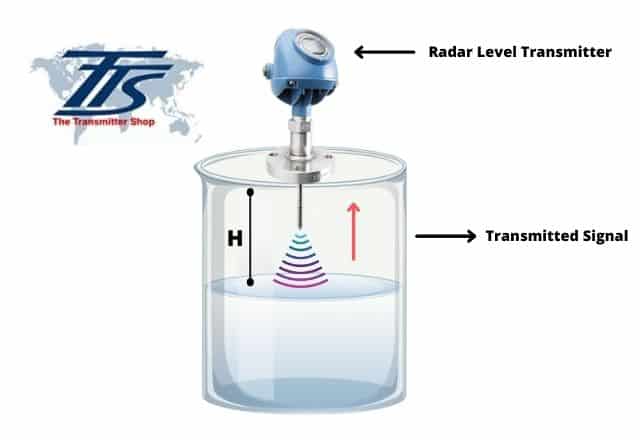Know How Guided Wave Radar Level Transmitters Work
Brian Craig
April 01, 2021
Radar as a technology for years has been used to detect occupancy, sound, and so on, in many mission critical applications such as defense, aerospace, and others. Additionally, it is also used in applications where liquid level monitoring is required, such as certain industrial processes. Usually, there are many contact-based probes and sensors used for level measurement. However, guided wave radar level transmitters offer a non-contact measurement of liquids and gases levels in industrial processes. This post discusses what radar level transmitters are and how they work in level measurement applications.
How do Guided Wave Radar Level Sensor Work?
Generally, radar level transmitters are used if non-contact level measurements are required on a continual basis. These transmitters use electromagnetic radiation of a frequency around 10 GHz, which falls in the microwave band. A radar transmitter system or unit comprises an antenna, an operating interface, a signal processor, receiver, and an in-built oscillator. The tank, reservoir, or wherever liquid measurement level is required, has a sensor fitted onto its surface. The radar detector emits waves which hits the liquid surface and returns to the sensor on the top of the tank. Here the time factor, time domain reflectometry (TDR), or time of flight is considered for level measurement, which means the time taken by the waves from the current liquid surface to the sensor would give the depth of the liquid in the tank. This basic principle applies to all radar transmitters. In case of guided wave radar level transmitters, it is possible to detect the level of fluids with a low dielectric constant as these transmitter antennas can be configured in several ways depending upon the requirement. Guided wave radar level transmitters are far more efficient than the earlier air pressure radar transmitters, and they can withstand various conditions such as high temperatures, high pressure, fluid vapors, and so on. Also, there are no impediments, owing to which the signals get a clear path to travel. These transmitters are extremely reliable and offer accurate readings.

Guided Wave Level Radar Transmitters for Interface Measurement of Immiscible Liquids
The radar technology is also utilized to measure the levels of two immiscible liquids such as oil and water. In this case, a probe needs to be inserted into the two liquids which would act as an interface between them. Therefore, these transmitters find applications in interface level measurement. This is because there are two reflections detected one from the upper non-conductive fluid and the other and the maximum reflection from the lower and conductive fluid, which is water. The reflections are a result of the electromagnetic waves traversing through the two immiscible media and returning a signal or pulse. These transmitters can be now made intelligent or automated, and their signal strength can be improved as well.
Advantages of Using Guided Wave Radar Level Sensor
As mentioned, these Radar level transmitters offer accurate readings and can be made technologically advanced. Here are a few more advantages:
- Radar level transmitters can be used for liquids with a low dielectric constant.
- They are applicable for level as well as interface measurements.
- The consistency of liquids is not an issue. It may be viscous, slurry, semi-solid, particulate, and so on.
- There is no impediment in the measurement process irrespective of the conductivity level, dielectric constant, density, pressure, or temperature of the fluids. All these factors do not hamper the accuracy of the readings.
- Radar level transmitters are easy to install and low on maintenance as there are minimal or no moving parts.
If you need radar level transmitters to make your application a non-contact one, ensure you source them from a reputed supplier. The Transmitter Shop (TTS) is a distributor of new and reconditioned guided wave radar level transmitters in the US. The company sources these transmitters only from known and certified brands, and has served many clients across industries with their transmitter requirements.
Related Posts
- What are the Advantages of Different Types of Level Measurement Transmitters?
- Types of Level Measurement Transmitters & How Do They Work?
- How to Choose Between a Level Transmitter and Level Switch?
- Radar Level Transmitters: Setup and Working Principle
- Radar Level Transmitters: Types & Industrial Applications
- Radar Level Transmitter Vs Ultrasonic Level Transmitter – Know the Real Difference
- Know How Guided Wave Radar Level Transmitters Work
- How to Measure Pressure, Flow, and Level Accurately in Instrumentation Lines?
- Level Monitoring Solutions for Molten Metal Applications
- Steam Boiler Drum Level Measurement A Comparison of Control System Technologies
- Flow Measurement Challenges in Subsea Operations
- Pressure Sensing Sensor Modes of Measurement Key Differences and Benefits
- Electromagnetic Flow Sensors for Abrasive and Corrosive Fluids
- Mass Flow Meters and Their Working Principles
- Best Explosion Proof Switches for Hazardous Environments
- Best Explosion Proof Switches for Hazardous Environments
- Furnace Flame Sensor Faults Everything You Need to Know for Safe Operation
- Pneumatic Pressure Controllers: A Safe Choice for Hazardous Areas
- A Practical Guide to Vacuum Measurement and Operation
- Understanding Electrochemical Detection: Principles, Techniques and Environmental Application
QUICK ENQUIRY







